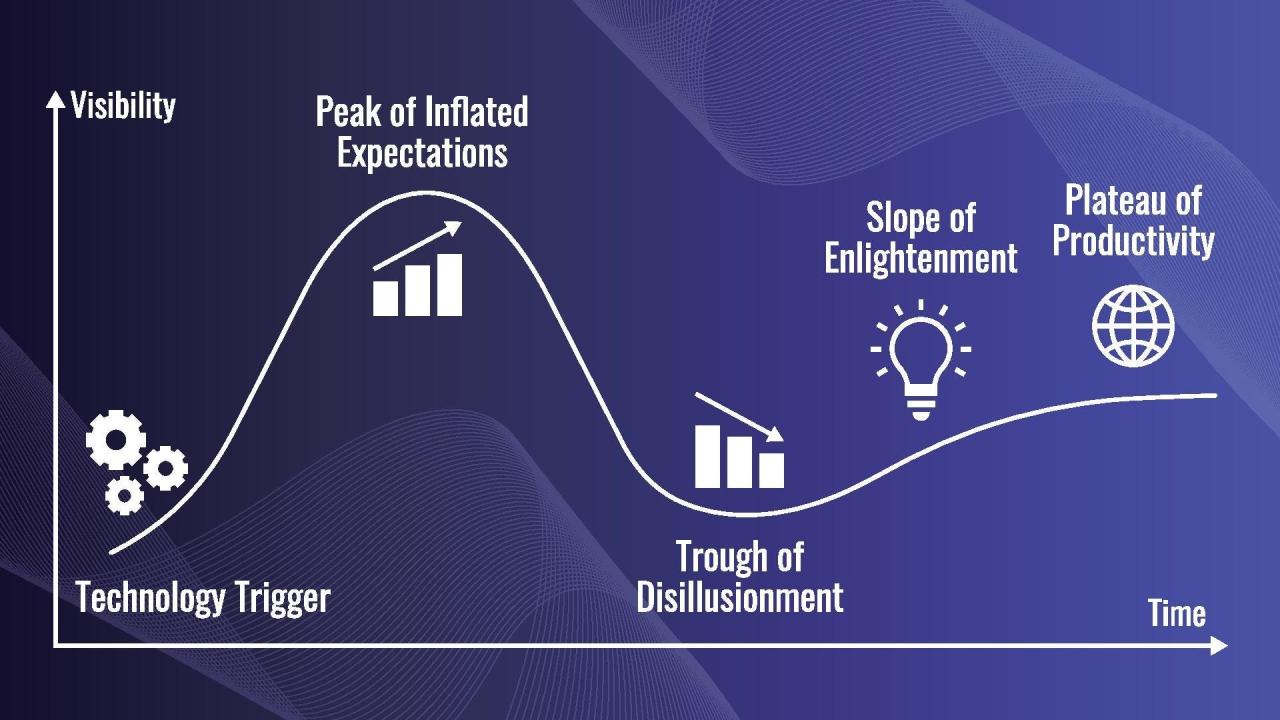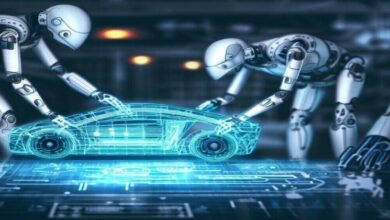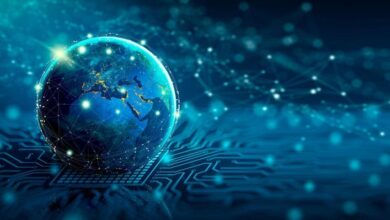Beyond the Hype: Silicon Valley’s Unseen Revolutions


When the average person thinks of Silicon Valley, a specific, flashy imagery likely comes to mind: the sleek launch events for the latest iPhone, the meteoric rise of apps like TikTok, the ambitious promises of self-driving cars, and the colossal wealth of tech titans like Musk and Zuckerberg. This is the “loud” Silicon Valley—the one that dominates headlines, drives stock market frenzies, and shapes modern pop culture. However, behind this curtain of sensationalism and consumer-facing products lies a different, more profound reality. This is the realm of Silicon Valley’s silent innovations. These are the unglamorous, deeply technical, and often invisible breakthroughs that don’t make for viral marketing campaigns but are fundamentally rewiring the infrastructure of our daily lives, global economies, and the very fabric of human capability. This article delves beneath the surface to explore the transformative technologies operating in the background, the quiet engines of progress that are, without most of us even noticing, building the future.
A. The Unseen Foundations: Cloud Computing and Global-Scale Infrastructure
Long before a user streams a movie on Netflix or a small business leverages a sophisticated AI tool, an immense, silent revolution in infrastructure has already done the heavy lifting. The shift from localized computing to distributed, on-demand cloud services is arguably one of Silicon Valley’s most significant yet under-heralded achievements.
A. The Architectural Shift: Companies like Amazon (with AWS), Google (Google Cloud), and Microsoft (Azure) pioneered the concept of treating computing power, storage, and database management as utility services, much like electricity or water. This seems mundane now, but its implications are earth-shattering. A startup no longer needs to sink millions into a private server farm; it can simply rent precisely the amount of computing power it needs, scaling up or down in real-time. This has democratized innovation, lowering the barrier to entry for countless entrepreneurs worldwide.
B. The Physical Backbone: The “cloud” is not an ethereal concept; it is a massive physical network of data centers spread across the globe. These are not ordinary buildings. They are engineering marvels designed for maximum efficiency, security, and resilience. They house hundreds of thousands of servers, connected by high-speed fiber-optic cables that run under oceans and across continents. The innovation here is not just in the hardware but in the sophisticated software that manages this vast resources—automatically allocating workloads, balancing traffic, and predicting failures before they happen. This global nervous system enables everything from seamless video conferencing to the real-time collaboration on documents that we now take for granted.
C. The Ripple Effects: The silent power of cloud computing extends far beyond tech. It enables:
-
Scientific Research: Genomics researchers can analyze massive DNA datasets in hours instead of years.
-
Financial Modeling: Banks can run complex risk simulations to ensure economic stability.
-
Disaster Response: Real-time data from satellites and ground sensors can be processed to coordinate relief efforts during natural calamities.
This foundational layer, though invisible to the end-user, is the non-negotiable bedrock upon which the modern digital world is built.
B. The Silent Orchestrator: Artificial Intelligence and Machine Learning
Artificial Intelligence (AI) is often discussed in the context of humanoid robots or dystopian science fiction. The reality of its most impactful application is far more subtle and integrated. Silicon Valley has embedded AI as the silent, intelligent orchestrator within countless processes.
A. Predictive Analytics and Personalization: When Netflix recommends your next show or Spotify creates a personalized “Discover Weekly” playlist, that’s not magic; it’s a silent AI algorithm at work. These systems analyze your viewing/listening history, compare it with millions of other users, and identify patterns invisible to the human eye. This same technology powers the product recommendations on Amazon, the news feed on Facebook, and the search results on Google. The innovation is in creating a uniquely tailored experience for each user at a scale of billions.
B. Computer Vision and Automation: This branch of AI, which teaches machines to “see” and interpret visual data, is revolutionizing fields quietly from within. It’s not just about filtering social media photos. In agriculture, computer vision algorithms analyze drone footage of fields to identify pest infestations or nutrient deficiencies, enabling precision farming that conserves water and pesticides. In healthcare, AI models are now more accurate than human radiologists at detecting early signs of diseases like cancer in medical scans, leading to earlier interventions and saved lives. In manufacturing, computer vision systems perform quality control, spotting microscopic defects on assembly lines with superhuman consistency.
C. Natural Language Processing (NLP): The ability of machines to understand and generate human language is a silent revolution in communication. Beyond conversational chatbots, advanced NLP models like GPT-4 and BERT are working behind the scenes. They power real-time translation services that break down language barriers, summarize lengthy legal documents in seconds, and help writers by suggesting improvements in grammar and style. This technology is augmenting human intellect and accessibility in profound ways, all without fanfare.
C. The Invisible Enforcer: Cybersecurity and Cryptographic Protocols
In an increasingly digital world, the threat of cyberattacks is a constant shadow. Silicon Valley’s response has been to develop a sophisticated, ever-evolving arsenal of defensive technologies that operate almost entirely in the background, acting as the invisible guardians of our digital lives.
A. Advanced Threat Detection: Modern cybersecurity is no longer just about firewalls and antivirus software. It employs AI-driven systems that use behavioral analytics to establish a “normal” pattern of activity for a network or user. Any deviation from this baseline—such as a user logging in from an unusual location or a system attempting to access sensitive data at an odd hour—triggers an automatic alert and remediation. This proactive defense stops attacks before they can cause damage, all without the user’s knowledge.
B. The Blockchain and Decentralized Trust: While cryptocurrencies are the loud and volatile face of blockchain technology, its underlying innovation is a silent revolution in trust and verification. A blockchain is essentially a distributed, immutable ledger. This means it can create a permanent, unchangeable record of transactions or data that is not controlled by any single entity. Silicon Valley is exploring its quiet applications in:
-
Supply Chain Management: Tracking the journey of a food product from farm to table, ensuring its authenticity and safety.
-
Digital Identity: Providing individuals with a self-sovereign digital ID that cannot be tampered with, which is crucial for refugees or those without formal identification.
-
Secure Voting Systems: Creating a verifiable and transparent electoral process to bolster democratic integrity.
These applications are about building trust into systems without the need for a central authority, a profound and quiet shift in how we conceive of security and agreement.
C. End-to-End Encryption: Services like WhatsApp and Signal have made end-to-end encryption a household term, but its silent work is often overlooked. This technology ensures that only the communicating users can read the messages. Not even the company hosting the service has access. In an era of mass data collection, this innovation is a silent fortress protecting personal privacy, allowing for secure communication for journalists, activists, and everyday citizens alike.

D. The Biological Bridge: Biotech and the Quantified Self
Silicon Valley’s ambition is not confined to the digital realm; it is increasingly bridging the gap to the biological, leading to silent revolutions in healthcare and human biology.
A. CRISPR and Gene Editing: The development of CRISPR-Cas9 technology, while born from academic research, has been heavily funded and accelerated by Silicon Valley’s venture capital and biotech firms. This is a silent, molecular-scale innovation with monumental implications. It allows scientists to edit genes with unprecedented precision, offering the potential to cure genetic diseases like sickle cell anemia, create drought-resistant crops to combat famine, and even tackle vector-borne diseases by altering mosquito populations. The work happens in quiet labs, but its potential to reshape life itself is deafening.
B. The “Quantified Self” Movement: Fueled by wearable devices from companies like Apple and Fitbit, this movement is about using technology to collect data on all aspects of a person’s daily life. The silent innovation is in the sensors and the data analytics. Your smartwatch doesn’t just count steps; its optical heart sensor, accelerometer, and gyroscope silently gather vast amounts of physiological data. In the background, algorithms analyze this data to identify trends, warn of abnormally high or low heart rates, and even detect potential signs of atrial fibrillation. This is a shift from reactive healthcare to proactive, personalized wellness, all guided by silent, continuous monitoring.
C. Telemedicine and Digital Health Platforms: The rapid normalization of telemedicine, especially post-2020, is underpinned by a silent infrastructure of secure video platforms, electronic health records (EHR) systems, and data privacy laws. Silicon Valley companies have created the seamless interfaces that allow patients to consult with doctors from their homes. The deeper innovation is in the integration of this data, which, with patient consent, can feed into larger AI models to improve diagnostic accuracy and treatment outcomes on a population level.
E. The Sustainable Shift: Green Tech and Resource Management
Confronted with the climate crisis, a significant portion of Silicon Valley’s innovative energy is being channeled into sustainable technology. These “green tech” innovations are often silent, working to optimize resource use and reduce our environmental footprint.
A. Smart Grids and Energy Storage: The transition to renewable energy sources like solar and wind is hampered by their intermittent nature. Silicon Valley is addressing this through smart grid technology and advanced battery storage. Smart grids use sensors and IoT devices to dynamically manage the flow of electricity, balancing supply and demand in real-time to prevent blackouts and improve efficiency. Meanwhile, companies like Tesla are innovating in massive grid-scale battery storage, which allows excess renewable energy to be stored and used when the sun isn’t shining or the wind isn’t blowing. This silent optimization is critical for a sustainable energy future.
B. Precision Agriculture: As mentioned briefly with computer vision, the agricultural sector is being transformed by silent tech. Beyond drones, this includes IoT sensors in the soil that monitor moisture and nutrient levels, allowing for hyper-efficient irrigation and fertilization. This not only boosts crop yields but also dramatically reduces agricultural runoff, a major source of water pollution. It’s a data-driven approach to one of humanity’s oldest practices.
C. Carbon Capture and the Circular Economy: Some of the most ambitious silent innovations are focused on directly addressing atmospheric CO2. Startups are developing direct air capture technologies that literally pull carbon dioxide out of the air. Others are innovating in materials science, creating biodegradable alternatives to plastics and developing processes for a true circular economy where waste is designed out of the system. These are long-term, capital-intensive bets that may not yield immediate profits but represent a silent, determined effort to heal the planet.
Conclusion: The Echo of the Unseen
The loud, consumer-facing products of Silicon Valley will continue to capture our attention and shape our cultural discourse. They are the tip of the iceberg. However, it is the silent innovations—the vast, submerged bulk of the iceberg—that are truly engineering the future. From the global utility of the cloud and the intelligent orchestration of AI to the biological bridges of biotech and the silent sustainability of green tech, these developments are redefining the possible. They operate in the background, in server farms, in lines of code, in lab samples, and in smart sensors, their hum drowned out by the noise of product launches and market speculation. Yet, their impact is more profound and enduring. To understand Silicon Valley’s true power and legacy, we must learn to listen to the quietest revolutions, for it is there that the future is being built, one silent breakthrough at a time.
Tags: silicon valley, technology innovations, cloud computing, artificial intelligence, machine learning, cybersecurity, biotechnology, green technology, future trends, digital infrastructure, SEO




